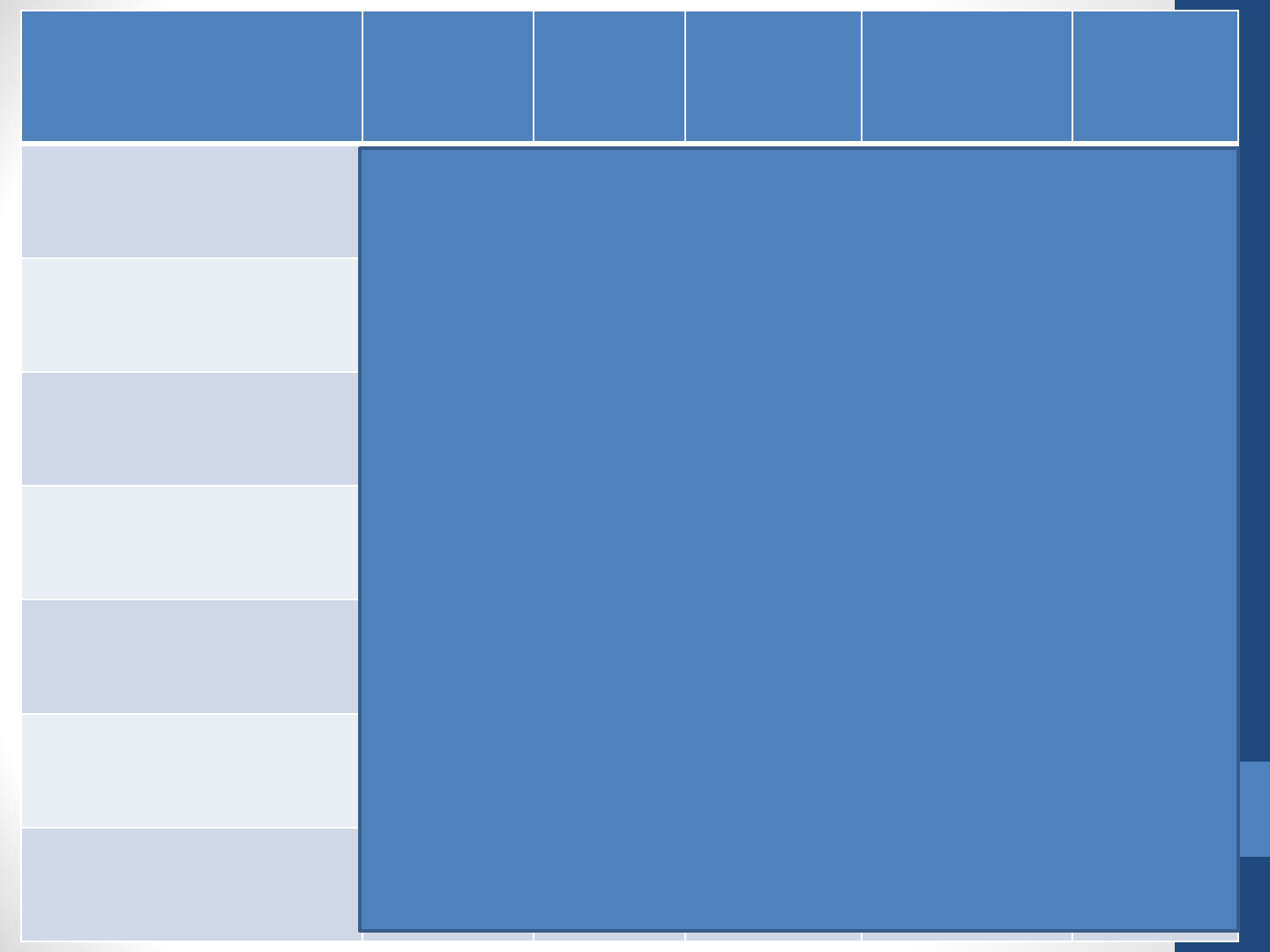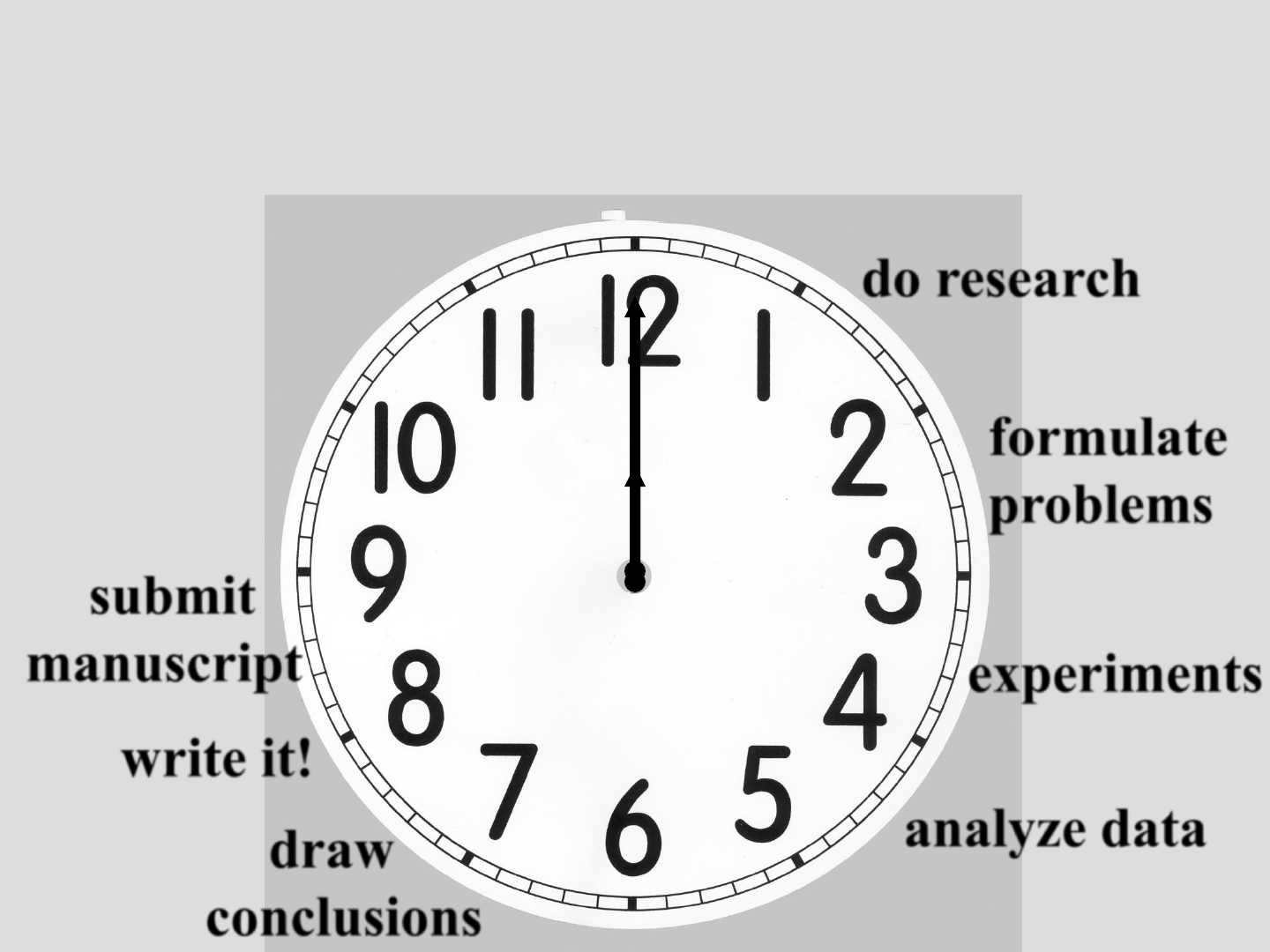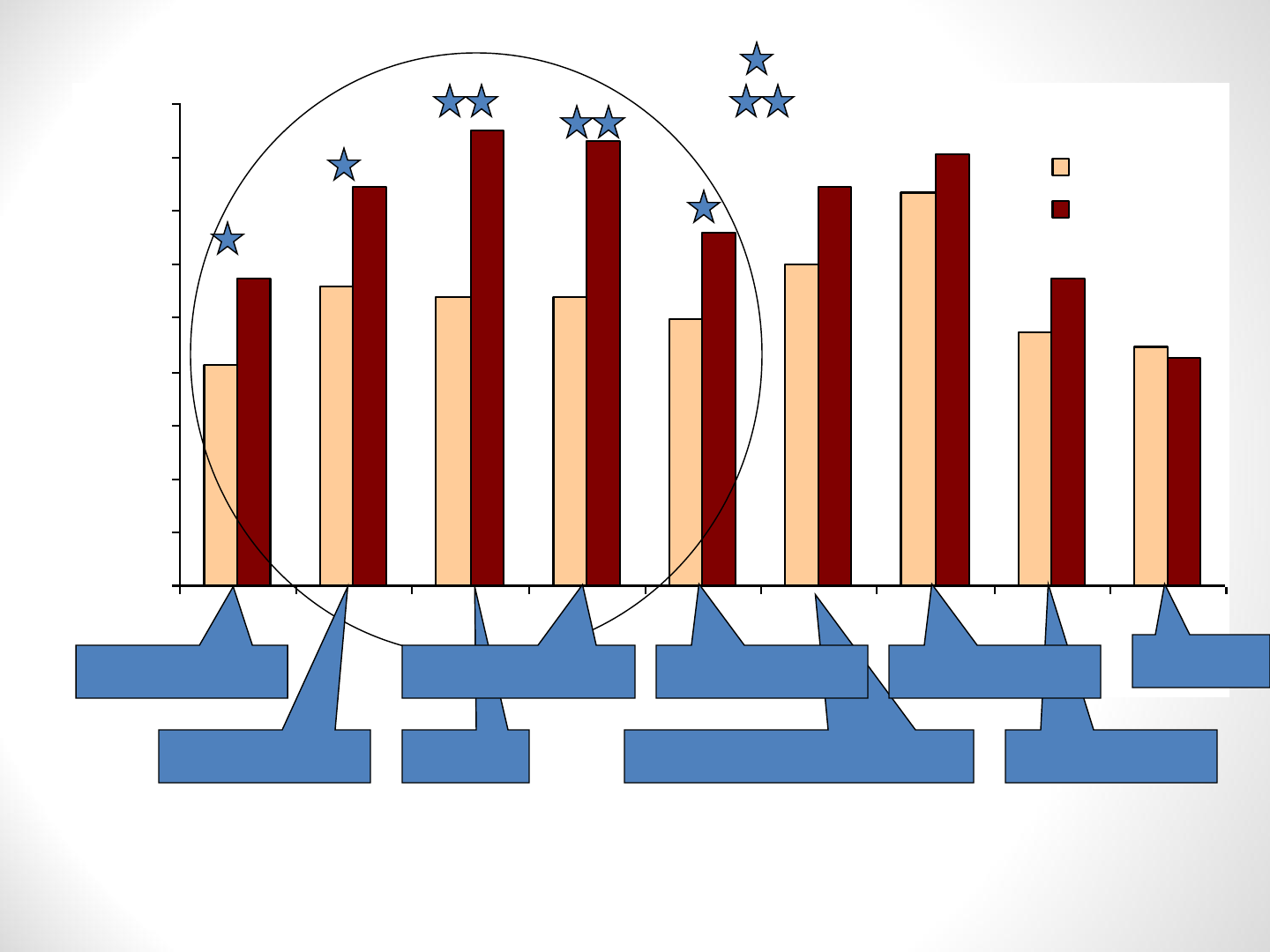
Writing Across
the Curriculum:
Myths, Challenges,
and A Big Idea
Julie Reynolds
Duke University
September 17, 2014

• WTL Working group
• Biology = 2
• Chemistry = 3
• Education = 1
• Engineering = 2
• Physics = 1
• Psychology = 1
• Writing = 2
• Workshop = 80 STEM faculty

.
Biology
/ Life
Sciences
Chemistry
Engineering
Math/Computer
Science
/
Statistics
Physics
/
Earth Sciences
Content knowledge
Intro
Advanced
Capstone
Intro
Advanced
Capstone
Intro
Advanced
Capstone
Intro
Advanced
Capstone
Intro
Advanced
Capstone
Conceptual understanding
Intro
Advanced
Capstone
Intro
Advanced
Capstone
Intro
Advanced
Capstone
Intro
Advanced
Capstone
Intro
Advanced
Capstone
Scientific method
Intro
Advanced
Capstone
Intro
Advanced
Capstone
Intro
Advanced
Capstone
Intro
Advanced
Capstone
Intro
Advanced
Capstone
Critical thinking
Intro
Advanced
Capstone
Intro
Advanced
Capstone
Intro
Advanced
Capstone
Intro
Advanced
Capstone
Intro
Advanced
Capstone
Effective communication
Intro
Advanced
Capstone
Intro
Advanced
Capstone
Intro
Advanced
Capstone
Intro
Advanced
Capstone
Intro
Advanced
Capstone
Metacognition
Intro
Advanced
Capstone
Intro
Advanced
Capstone
Intro
Advanced
Capstone
Intro
Advanced
Capstone
Intro
Advanced
Capstone
Professionalization
Intro
Advanced
Capstone
Intro
Advanced
Capstone
Intro
Advanced
Capstone
Intro
Advanced
Capstone
Intro
Advanced
Capstone

.
Biology
/ Life
Sciences
Chemistry
Engineering
Math/Computer
Science
/
Statistics
Physics
/
Earth Sciences
Content knowledge
Intro
Advanced
Capstone
Intro
Advanced
Capstone
Intro
Advanced
Capstone
Intro
Advanced
Capstone
Intro
Advanced
Capstone
Conceptual understanding
Intro
Advanced
Capstone
Intro
Advanced
Capstone
Intro
Advanced
Capstone
Intro
Advanced
Capstone
Intro
Advanced
Capstone
Scientific method
Intro
Advanced
Capstone
Intro
Advanced
Capstone
Intro
Advanced
Capstone
Intro
Advanced
Capstone
Intro
Advanced
Capstone
Critical thinking
Intro
Advanced
Capstone
Intro
Advanced
Capstone
Intro
Advanced
Capstone
Intro
Advanced
Capstone
Intro
Advanced
Capstone
Effective communication
Intro
Advanced
Capstone
Intro
Advanced
Capstone
Intro
Advanced
Capstone
Intro
Advanced
Capstone
Intro
Advanced
Capstone
Metacognition
Intro
Advanced
Capstone
Intro
Advanced
Capstone
Intro
Advanced
Capstone
Intro
Advanced
Capstone
Intro
Advanced
Capstone
Professionalization
Intro
Advanced
Capstone
Intro
Advanced
Capstone
Intro
Advanced
Capstone
Intro
Advanced
Capstone
Intro
Advanced
Capstone

Reynolds, JA, C. Thaiss, W. Katkin, and R.J. Thompson, Jr., Writing-to-Learn in
Undergraduate Science Education: A Community-Based, Conceptually Driven
Approach, CBE - Life Science Education, vol. 11 (2012), pp. 17–25 [abs].
Reynolds, JA, and R.J. Thompson, Jr., Want to Improve Undergraduate Thesis Writing?
Engage Students and Their Faculty Readers in Scientific Peer Review, CBE - Life
Science Education, vol. 10 (2011), pp. 209–215 [abs].
Goldberg, R., K. Caves, and J.A. Reynolds, Improving the quality of writing in a capstone
engineering design course, Proceedings of the ASEE National Conference
(2011), American Society for Engineering Education [fetch] [abs].
Reynolds, JA, When communicating science to the public, use VELCRO to make science
stick, Bulletin of Ecological Society of America, vol. 90 no. 3 (2009), pp. 297-304
[297] [abs].
Reynolds, JA, R. Smith, C. Moskovitz, and A. Sayle, BioTAP, the Biology Thesis
Assessment Protocol: A Systematic Approach to Teaching Scientific Writing and
Evaluating Undergraduate Theses, BioScience, vol. 59 no. 10 (2009), pp. 896-
903 [abs].
Reynolds, JA, and C. Moskovitz, Calibrated Peer Review™ assignments in science
courses: Are they designed to promote critical thinking and writing skills?,
Journal of College Science Teaching, vol. 38 no. 2 (2008), pp. 60-66 [abs].
Reynolds, JA, and V. Russell, Can You Hear Us Now?: A comparison of peer review
quality when students give audio versus written feedback, Writing Across the
Curriculum Journal, vol. 19 (2008), pp. 29-44 [pdf] [abs].

Myths about
writing and
science

Myth #1:
The last step
in your research is
“writing it up”

do research
formulate
problems
plan and execute
experiments
analyze data
draw
conclusions
write it up

do research
formulate
problems
experiments
analyze data
draw
conclusions
write it!
Correspondences
Lab notebooks
Incorporate
reviewer’s
comments
Re-write for another
audience
Drafts
submit
manuscript
Lab notebooks
Drafts

The reality:
• Writing is central to the scientific process
• We often deepen our thinking through our
writing
• Writing is so hard because “our
ambiguities become starkly revealed”
“I don't know what I think until I write it
down.” - Joan Didion

Myth #2:
Published scientific
articles represent
“good” writing

Science 2006 311(5767):1580 - 1583
“Although nature's choice is to chemically
power the diverse muscles of her design with a
high–energy-density fuel, humankind has
largely taken another route.

Science 2006 311(5767):1580 - 1583
“Although nature's choice is to chemically
power the diverse muscles of her design with a
high–energy-density fuel, humankind has
largely taken another route.

Science 2006 311(5767):1580 - 1583
“Although nature's choice is to chemically
power the diverse muscles of her design with a
high–energy-density fuel, humankind has
largely taken another route. In those systems,
electrical energy is typically converted to
mechanical energy by means of motors,
hydraulic systems, or piezoelectric,
electrostrictive, or electrochemical actuators
(1–9).

Science 2006 311(5767):1580 - 1583
“Although nature's choice is to chemically
power the diverse muscles of her design with a
high–energy-density fuel, humankind has
largely taken another route. In those systems,
electrical energy is typically converted to
mechanical energy by means of motors,
hydraulic systems, or piezoelectric,
electrostrictive, or electrochemical actuators
(1–9). Because of high electrical power needs,
some of the most athletically capable robots
cannot freely prance around because they are
wired to a stationary power source.”

The reality:
• Good science will be published as long as
it is more-or-less readable
• Reviewers are scientists
• Scientists who have an inherent interest in
the subject matter will automatically fill in
the gaps of poorly written articles

Myth #3:
Strong students
strong writers

Student writing
“Increased catecholamine outflow from this
system induces sustained elevated activation of
the β-adrenergic receptor (β-AR) which results
in abnormalities in the -AR signaling system
that may ultimately lead to the pathogenesis of
congestive heart failure (CHF).”
“On the path to congestive heart failure (CHF),
the heart attempts to preserve cardiac output by
increasing activation of the β-adrenergic
receptor (β-AR).”
Revision

The reality:
• Students need guidance regarding the
conventions and lexicon of our discipline

Myth #4:
The best way
to teach students to
write is to “fix” their
writing

What has to happen for learning to occur?
1. Students must determine why a change was made
2. Students must ask “Does the professor’s choice
consider my purpose?”
3. Students must ask “What other choices are there?”
4. Student must extrapolate to another writing context

The reality:
• Co-authoring takes away students’ writing
choices

Myth #5:
Students readily
transfer writing skills
from one context to
another

The reality:
• Unless students engage fully in the writing
process, they will not transfer
• The iterative nature of writing deepens
engagement and thinking
• Writing triggers underlying mechanisms of
effect

Challenges of
writing across the
curriculum

Challenge #1:
Students need more
opportunities to write

Scientists are always writing…
do research
formulate
problems
experiments
analyze data
draw
conclusions
write it!
Letters
Drafts
Lab notebooks
Incorporate
reviewer’s
comments
Re-write for another
audience
Drafts
submit
manuscript

…but are our STEM majors?
Freshman writing
“W” course
“W” course

Challenge #2:
Students need exposure
to different genres of
writing

• Abstracts and summaries
• Lab notebooks, field journals, etc.
• Laboratory reports (using IMRaD)
• Supported position paper/opinion piece
• Research proposal
• Reviews
• Journal manuscript, book chapter, etc.

Challenge #3:
Students need
engagement in the
writing process

Writing as a process
Step 1: Pick a topic, audience, genre, style
Step 2: Organize ideas
Step 3: Draft sections
Step 4: Solicit feedback
Step 5: Take time away from your writing
Step 6: Re-read with fresh perspective
Step 7: Revise and edit

A Big Idea:
Writing
throughout
the major

Writing task
Intro
courses
Pre & Co-
Requisites
Core
Course
Capstone
seminar
Honor
thesis
Abstracts and
summaries
Lab notebooks, etc.
Laboratory reports
Op-eds/opinion pieces
Research proposal
Thesis, manuscript,
book chapter
•
•
•
•
•
•
•

Writing task
Intro
courses
Pre & Co-
Requisites
Core
Course
Capstone
seminar
Honor
thesis
Abstracts and
summaries
Lab notebooks, etc.
Laboratory reports
Op-eds/opinion pieces
Research proposal
Thesis, manuscript,
book chapter
•
•
•
•
•
•
•
•
•
•
•
•
•
•
•
•
•

But, we can’t just assign
more writing!

Writing assignments, defined in
their full rhetorical context
• Identifying the topic of the assignment
• Purpose
• Audience
• Feedback opportunities
• Evaluation criteria

Purpose of assignment
“This assignment allows you to begin to
become familiar with the literature in an area
of biodiversity that interests you.
Your goal is to identify interesting,
unanswered scientific questions that you
would like to pursue, if you had the time and
funding to do so.”

Audience
“Your audience is the Duke community –
fellow students, faculty and staff. Keep in
mind that your audience is probably
comprised of people with a wide range of
views. Consider whether it makes your
argument stronger or weaker to
acknowledge multiple perspectives.”

Feedback
Step 3: Draft sections
Step 4: Solicit feedback
Step 5: Take time away from your writing
Step 6: Re-read with fresh perspective
Step 7: Revise and edit

Grading rubric
exceptional strong average weak missing
Is this author’s claim central to this
essay, or does the essay focus on
someone else’s message?
How effective is evidence used to
support this author’s claim?
How well does this author explain,
describe, elucidate, and critique the
scientific problem at hand?
Is the scientific information treated fairly
and accurately? Is the information
communicated without bias? How well
does the author balance the problem of
oversimplification/ obfuscation?
Is this piece engaging? Does the author
work to keep the reader’s interest? Does
the author anticipate the reader’s
questions?
How well was the essay related to
the class’s chosen theme?
Were the mechanics and
presentation of this essay
appropriate and professional?

Modes of response
• Peer review
• Written responses
• Letter to student
• Comment boxes
• AVOID text editors
• Oral responses
• In-class workshops
• Conferences
• Recorded comments

Letter to student
Dear Carina,
You have a great topic, and one that has a considerable number of complications
that make it quite interesting. Your greatest challenge is going to be to communicate this
complexity in as simple a manner as possible.
The biggest problem you face right now is that your claim does not match your
argument. If, in fact, your claim is “Regardless of whether the Northern Spotted Owl still
needs protection, its habitat certainly does, and the ecological benefits of preserving this
important ecosystem offset the monetary costs.” (p1), then you don’t need to argue about the
status of the Northern Spotted Owl at all! Instead, your argument should focus on why the
habitat needs protection.
On the other hand, if your claim is that the ESA did help protect the NSO, then
your argument more closely matches this claim. Your last sentence of the essay states: “U.S.
citizens can only hope that the Senate also sees the great ecological significance of this area,
and rejects HR 3824.” Is this your main claim? As you have the essay written, this point
almost seems like a side point, rather than your main claim. Also, the last two sections of your
paper do not seem to be strongly linked to the rest of the essay, making the entire piece seem
interesting and informative, but not a strong argument.
The good news is that you have a lot of great material here to work with. I suggest
that you use this draft – which is really very good at capturing your ideas in writing – to
reframe your argument. Think about the story that you want to tell your readers and let that
guide you. Feel free to come to talk to me about this if you get stuck.
Cheers, Dr Reynolds

Comment boxes (respond, don’t fix)
A promising new therapy against [JAR1]cancer is the
use of antitumor vaccines delivered in dendritic cells
(Gilboa et al., 2004). Dendritic cells (DCs) are the
conductors of our immune orchestra, capable of
inducing, coordinating, and regulating virtually all
the elements of the body’s defense system
(Banchereau et al., 2005). Given their immunological
importance, DCs are attractive [JAR2]vectors for
vaccine therapy and are now being investigated as
potential antitumor agents against various cancers –
including melanoma, renal cell carcinoma, colorectal
cancer, prostate cancer, and fatal childhood
malignancies (Rosenberg et al., 2004).
[JAR2]another potential misreading -
you must mean researchers find DC to
be attractive, but as written you are
calling DCs “attractive vectors” (this
is a passive voice problem)
[JAR1]Do you mean “to
prevent” or “to treat”

Audio comments
“Further examination of the NO
3
concentrations at each site show that
the downstream site had the highest
NO
3
concentrations but also had few
samples (Figure 3)”.

How will all this
improve the writing and
thinking of STEM
majors?

Sustained writing Deeper learning
writing learning

How are students mentored
through the capstone process?

Biology Thesis Assessment Protocol
Biology
Chemistry
Economics
Engineering
(Neuroscience)
Teaching Assessment
Writing
process
Rubric
Academic writing
Writing-in-the-Disciplines
Office of Assessment
Faculty input
Curricular reform
Reaccreditation
Faculty development

Figure 1: Using BioTAP significantly improves students’ scores on higher-order writing and critical
thinking skills. Two-by-two Chi-square analyses were performed for each BioTAP question, comparing
mastery of the standards of excellence (score=5) versus non-mastery of these standards (score<5, only
mastery data shown) for BioTAP versus No BioTAP students.
0
0.1
0.2
0.3
0.4
0.5
0.6
0.7
0.8
0.9
1 2 3 4 5 6 7 8 9
BioTAP question
percentages
No BioTAP
BioTAP
Audience
Argument Goals
Organization
Citations
Visuals
Interpretation MechanicsImplications
p<0.05
p<0.01
